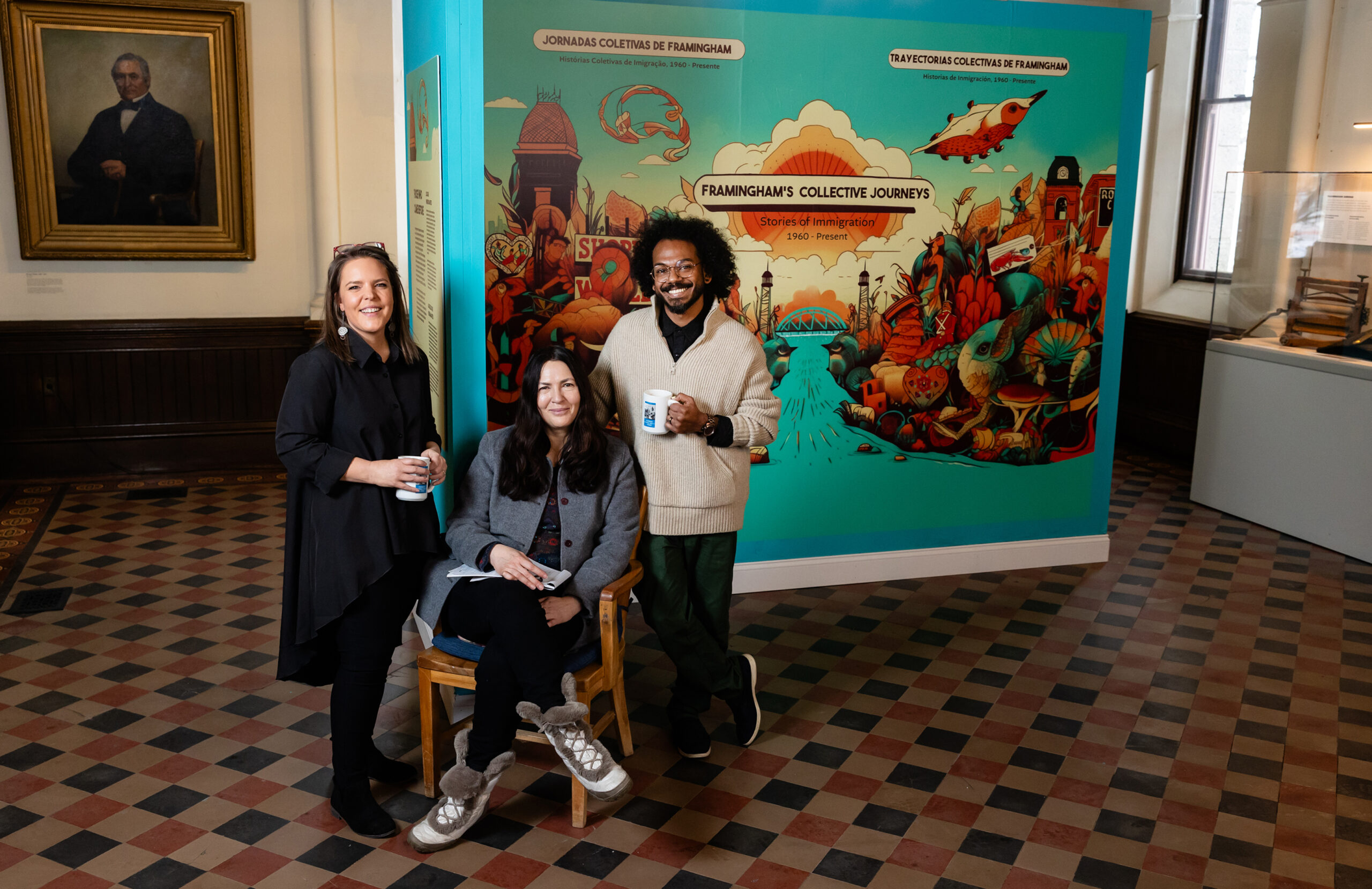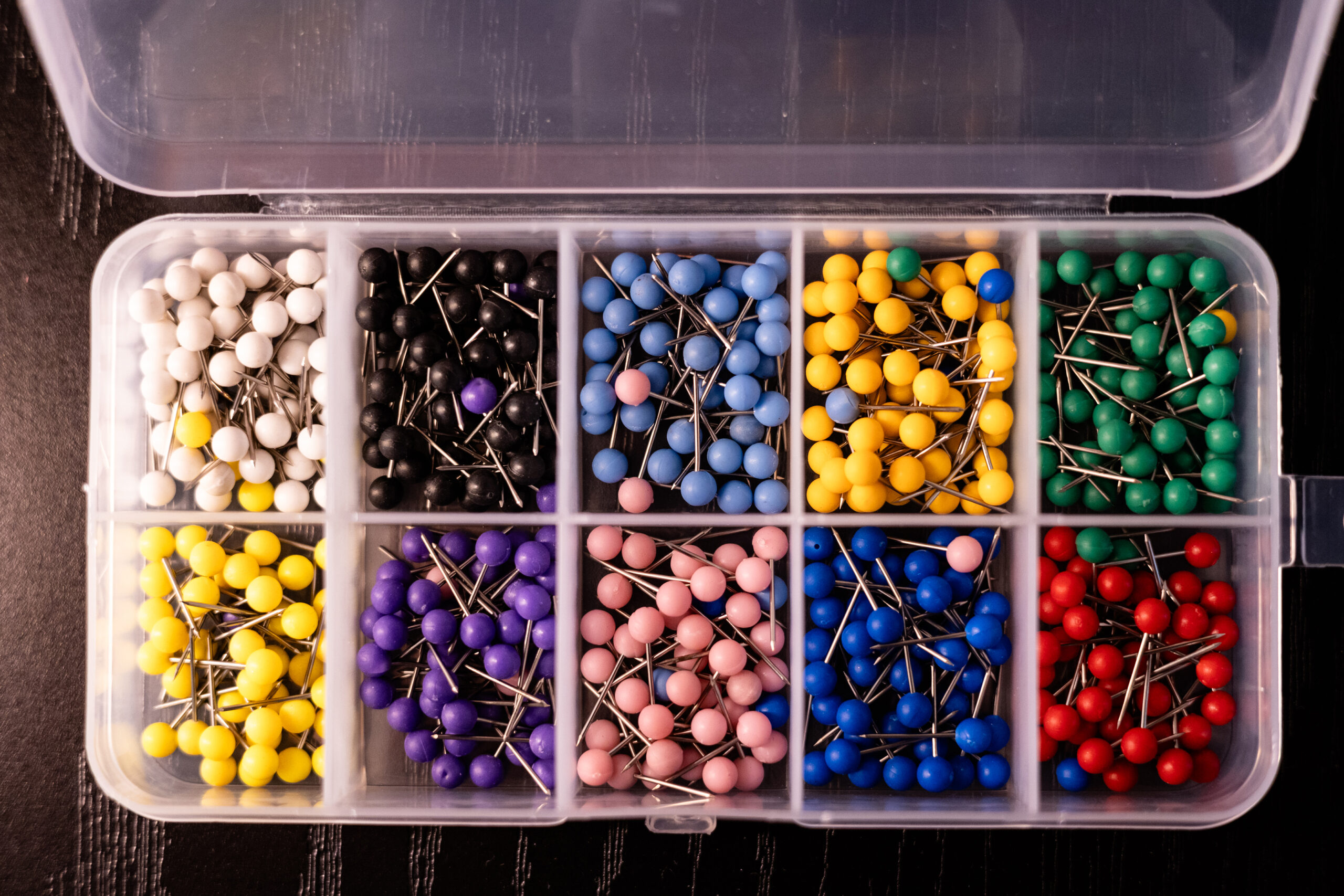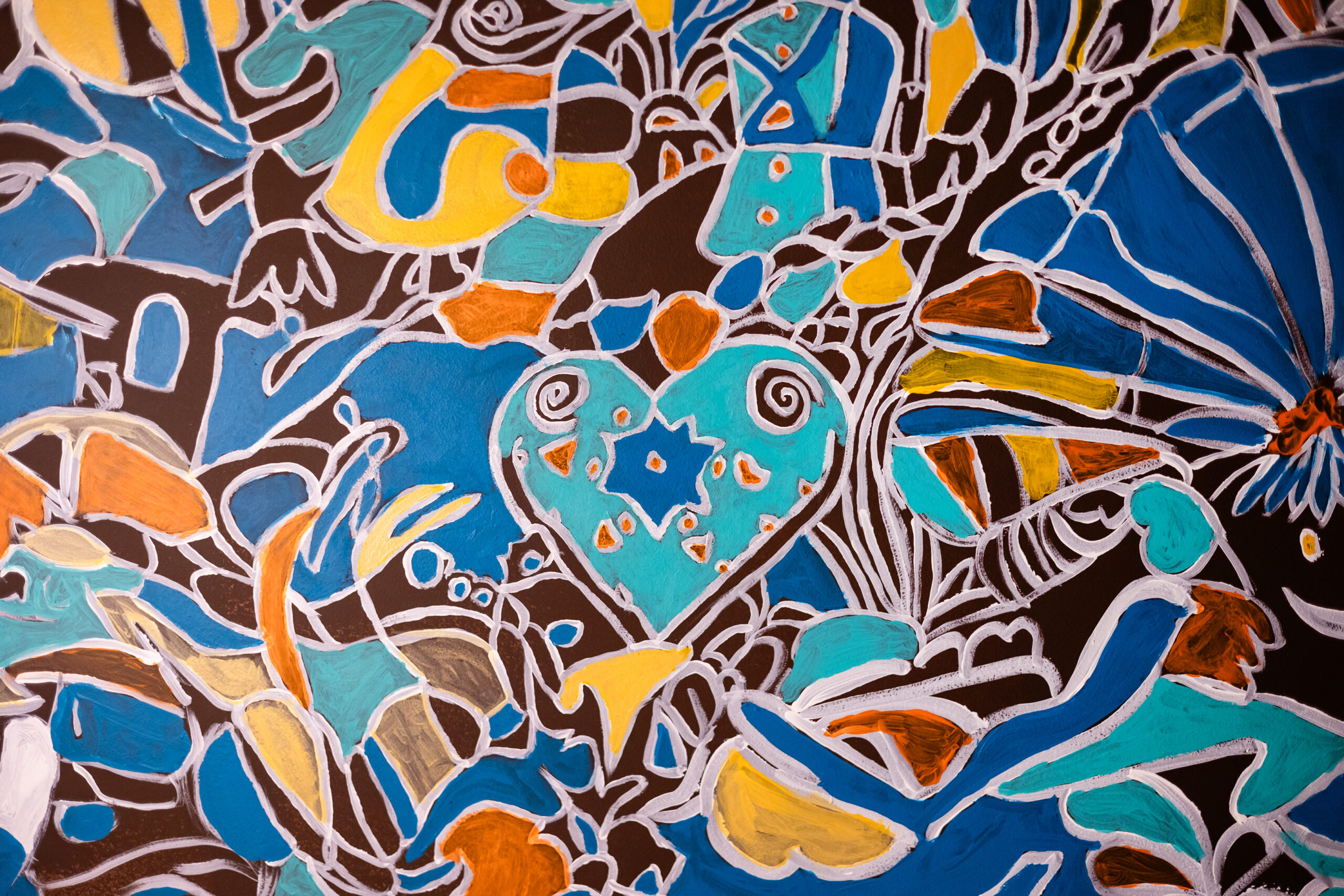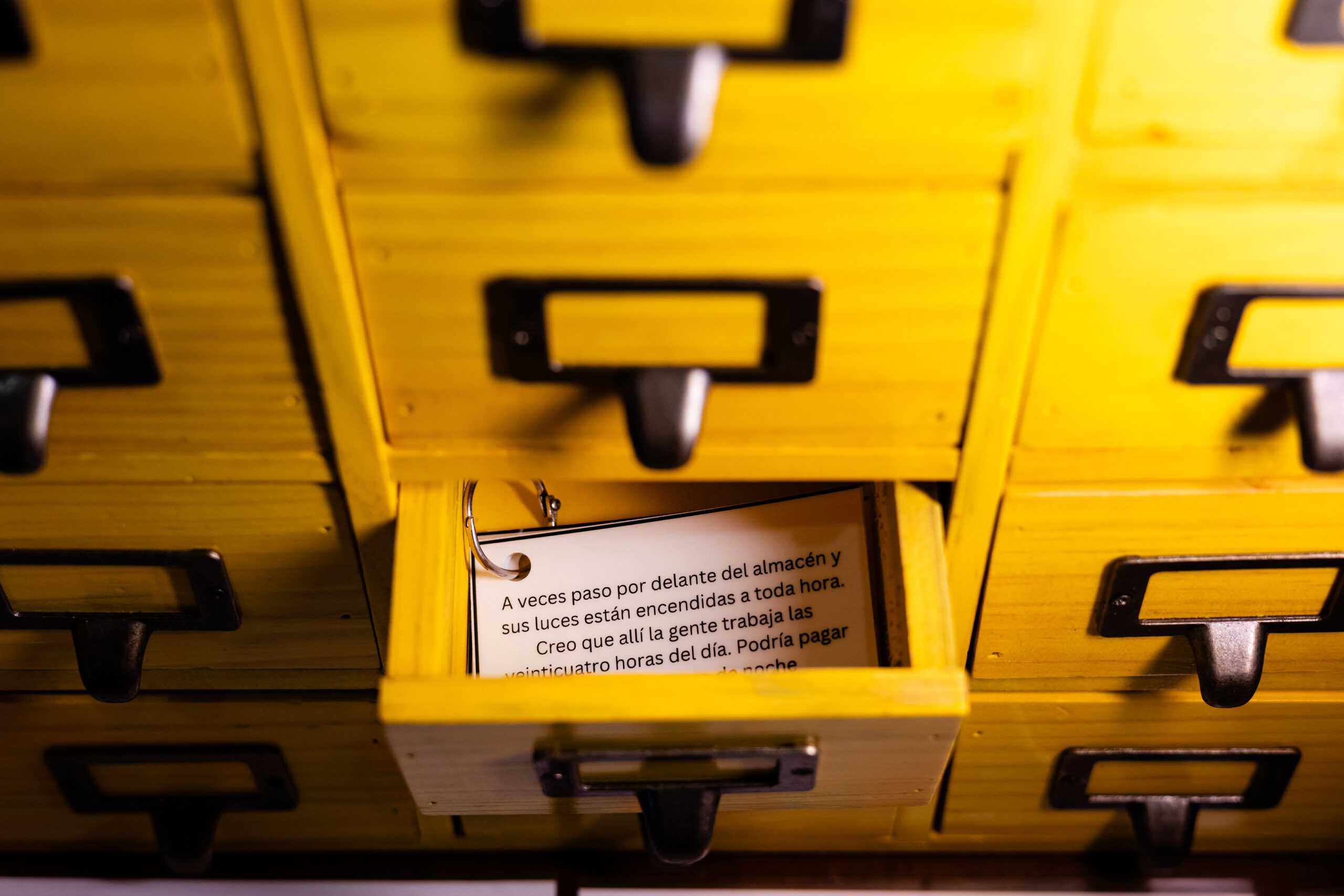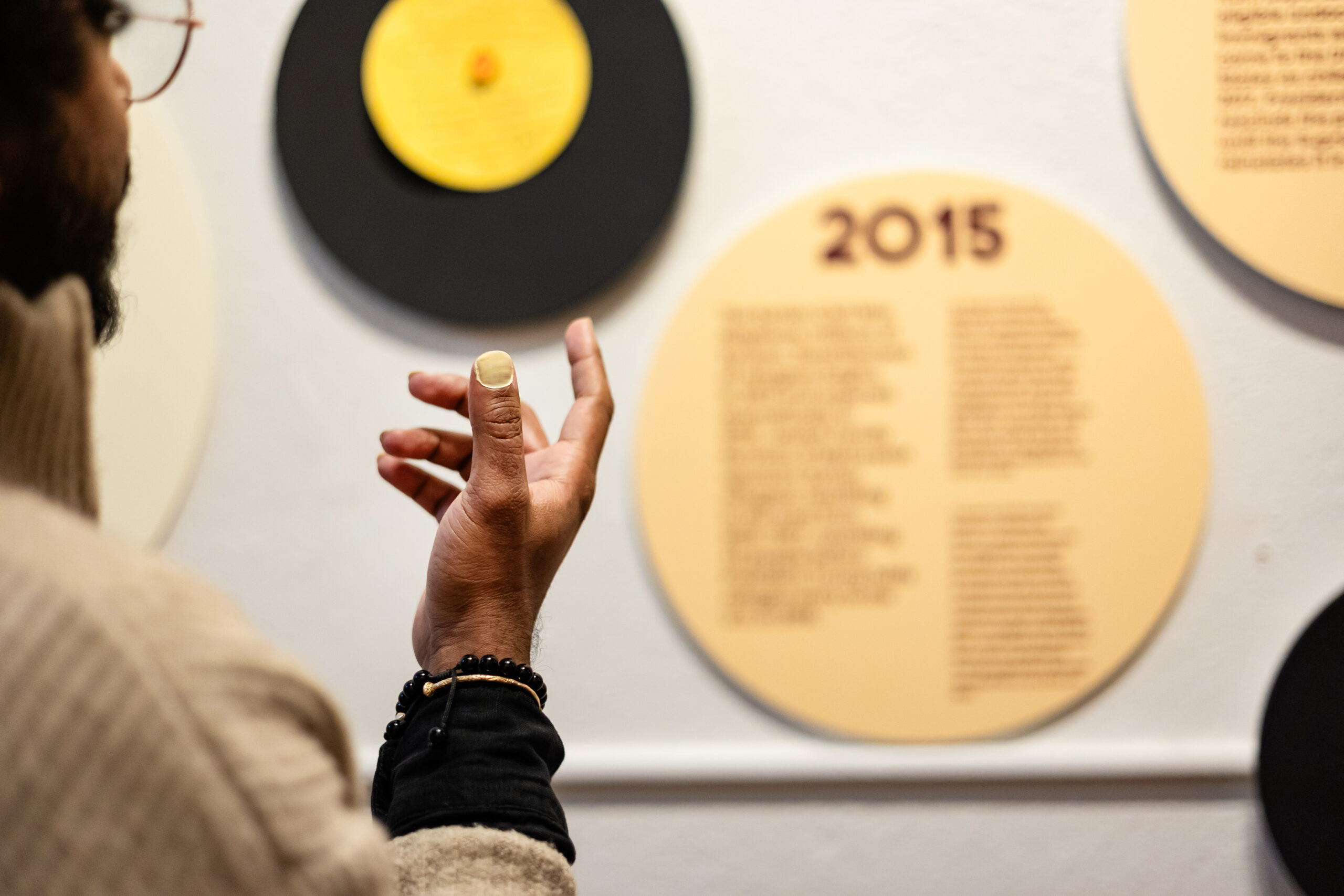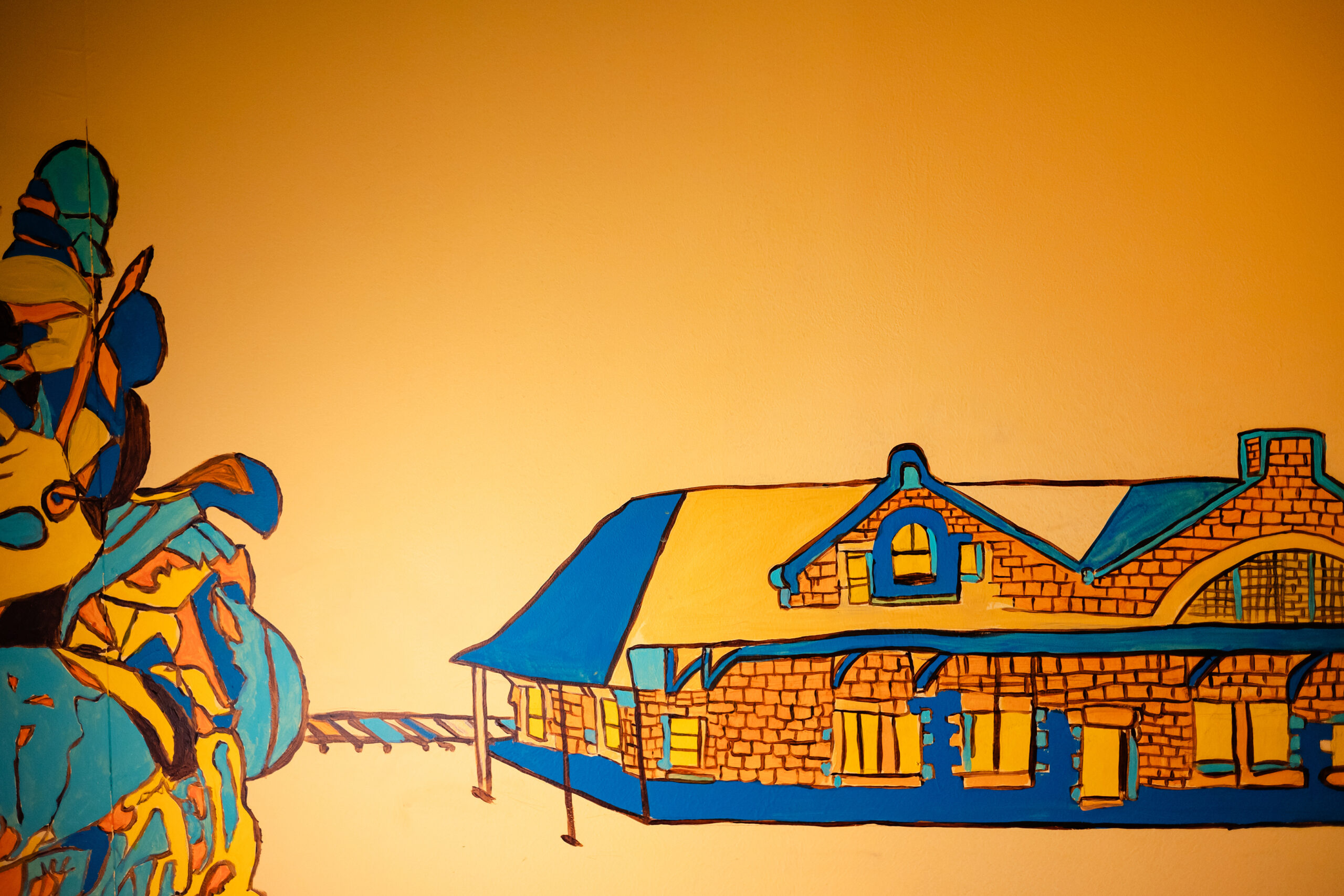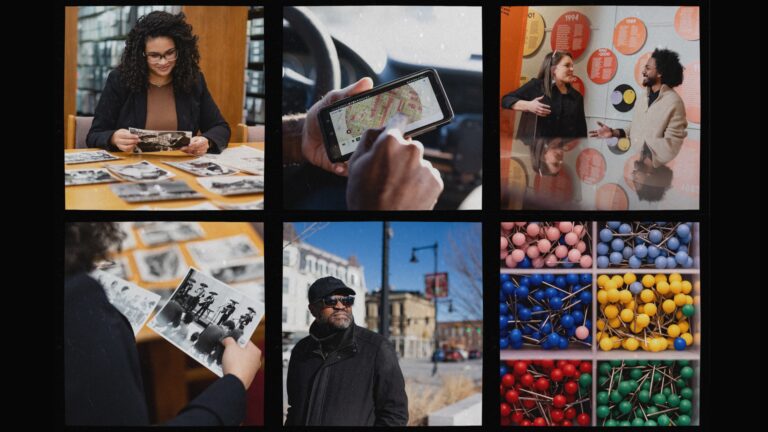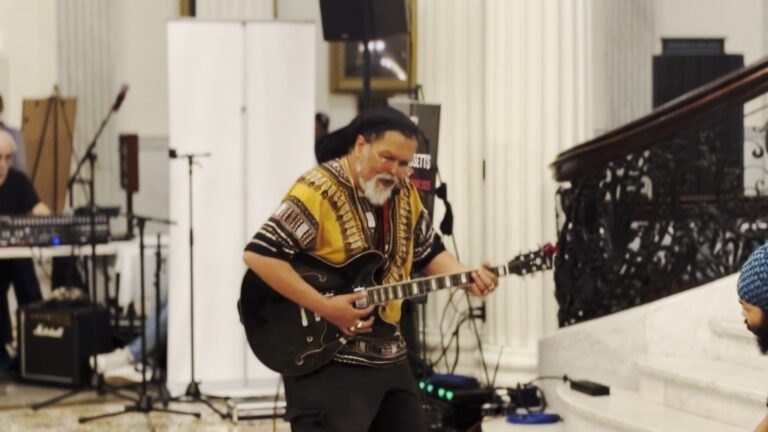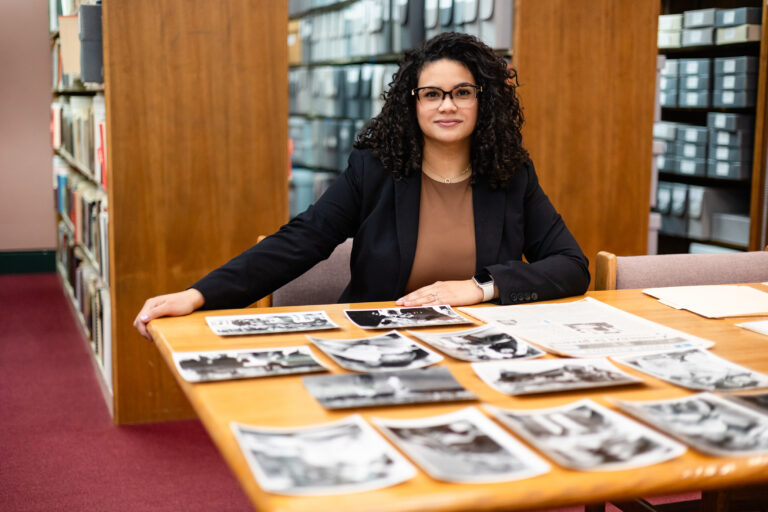“Framingham’s Collective Journeys: Stories of Immigration, 1960-Present” is the first trilingual exhibition ever created by the Framingham History Center. We recently sat down with Anna Tucker, executive director of FHC, Patrick St. Pierre, an artist and co-curator of the exhibit, and Claudia Ruiz Gustafson, programs manager at FHC, to reflect on the impact of this milestone.
What sparked the creation of “Framingham’s Collective Journeys”?
Anna Tucker: The spark is the community that’s around us. In Framingham one in every three residents is born outside the United States. As an organization our entire focus is: how do we reflect and share and preserve the stories of the people who are living here and working here? We reflected on how in our 136-year history, our exhibitions did not necessarily reflect the unfolding stories of the Framingham we see around us today. This was an opportunity for us to explore the histories that are often hidden around us, but that are actively building, and are the foundation of, Framingham. And we knew that if we had an exhibit like this, the History Center could not tell the story. It’s the community that tells the story. So the foundation for it was really the conversations in the communities and wanting to create a space where people could come in and say, “this is my museum, this is my story. I’m adding to it actively.”
Claudia Ruiz Gustafson: I’ve done a lot of tours for people, a lot of them immigrants from the community that, for the first time, saw themselves reflected on the walls of the museum. It was very powerful for them. There were a few occasions that even brought tears into their eyes. There was this Brazilian activist who was involved in starting the ESL program [in Framingham]. She cried when she when she was touring this exhibition. She asked the question: “why did you take so long?” There was a tour with older people from the Callahan Center. One of them read about the Cuban children that came here as part of Operation Peter Pan. They were unaccompanied children that left Cuba. He was one of them. And he saw his story reflected on the wall. He was very emotional and very proud and started telling me it’s a story about when he was a child. For me, this exhibition is important because it mirrors the city for the first time in 132 years of the Framingham History Center.
Patrick St. Pierre: I was brought on as an artist to figure out how to bring this thing to life. I started going online and looking up anything that I could find about Framingham history. Most of it’s about the Revolutionary War. So-called ancient history at this point. But what happened in between then and now? And as we started diving deeper into the story, I started finding my own story, my own culture, and how my family got to the place that they are. As I go over the story of the people of Framingham, it very much reflects, like a mirror, how my family got here.
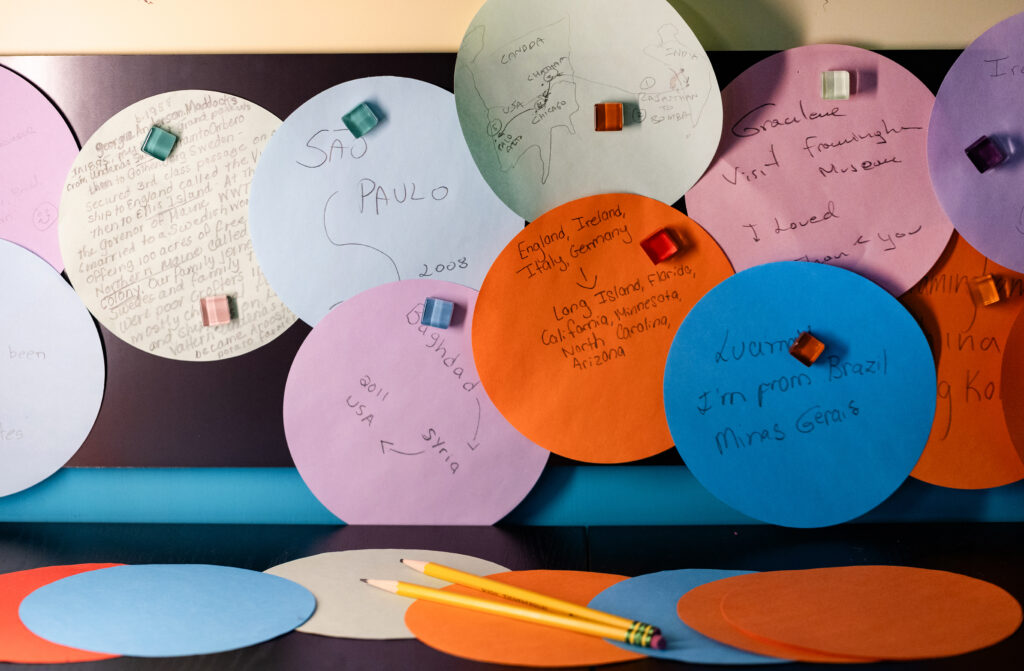
Anna Tucker: Everywhere throughout the exhibit there are places where people add their stories. From the very beginning, when you walk up and you see a map of belonging, the visitor is immediately invited to become part of the curatorial team. “Put your mark on the map, draw your story and the path that brought you here.” I often walk through the exhibit in the morning and I read these stories that people are so graciously sharing and putting them on the walls of the museum. And those stories are the why that I come here every single day. The stories show that people are are craving that place of belonging. And they’re saying, “oh, Framingham is it.” This museum is is a place where it’s reflecting this sense of of why we’re all here.
This exhibit shows that borders dissolve when stories are shared. And what we see with this exhibit is that Framingham is intimately connected with the entire world. And that means very intimately connected with all of Massachusetts.—Anna Tucker
How do you understand this idea of Expanding Massachusetts Stories?
Anna Tucker: What I’m so appreciative of the Expanding Massachusetts Stories initiative is that the funding provided this exhibit here. This exhibit would not have happened without Mass Humanities. And what Mass Humanities provided wasn’t just the funding—it was a connection to resources in communities, in workshops, in connecting with other really cool organizations and individuals who are doing this work all across Massachusetts. Suddenly, instead of us being in a bubble trying to figure this out just with Framingham community members, we’re getting to figure it out with people from Lowell and Lawrence and Boston. And that’s the power of the story. Stories are not isolated. They are intimately connected. If it weren’t for that grant, we wouldn’t be able to tie these stories in to the neighbors who are all around us across Massachusetts.
Patrick St. Pierre: If I want to get mofongo from the Dominican Republic, I know I can go to Springfield. What’s cool about working with Mass Humanities? I didn’t even know this until I started working on this project, is that there’s an organization that cares about that. They’re willing to go there and provide some resources to ignite them telling their stories. How wonderful is that? As a child of immigrants, I thought I was the only one who cared. But it’s so great to have the backing of an organization that really wants to solidify those stories and those communities.
How has “Framingham’s Collective Journeys” impacted the city, the History Center?
Claudia Ruiz Gustafson: In 2024 we had an amazing number of volunteers that came through our doors and wanted to be part of this of this Center. Most of them were first generation immigrants to the city. Our volunteer base exploded with diversity and an interest in the community. This was an amazing side effect that we had because of the exhibition. People are not afraid to come here because they can’t understand what’s on the walls. They can see that themselves reflected.
Anna Tucker: The History Center is becoming known as a place where you can explore this history. You can share your own story and people actively want to engage with each other. People are craving a gathering space where we can sort of exchange stories back and forth. And the History Center is known as a place where that happens. This exhibit is just one of those early steps in making sure that we’re we’re growing who we are with each other.
Patrick St. Pierre: Lots of gratitude, a lot of gratitude. Which is wonderful to see people audibly express their gratitude for the space, but also for one another. I think that Framingham is this wonderfully loose net of all of these different people creating the fibers. An exhibit like this, when people come together, if it makes sense that these fibers are tightened a little bit. The holes are sort of mended and we get to look at each other as real people.
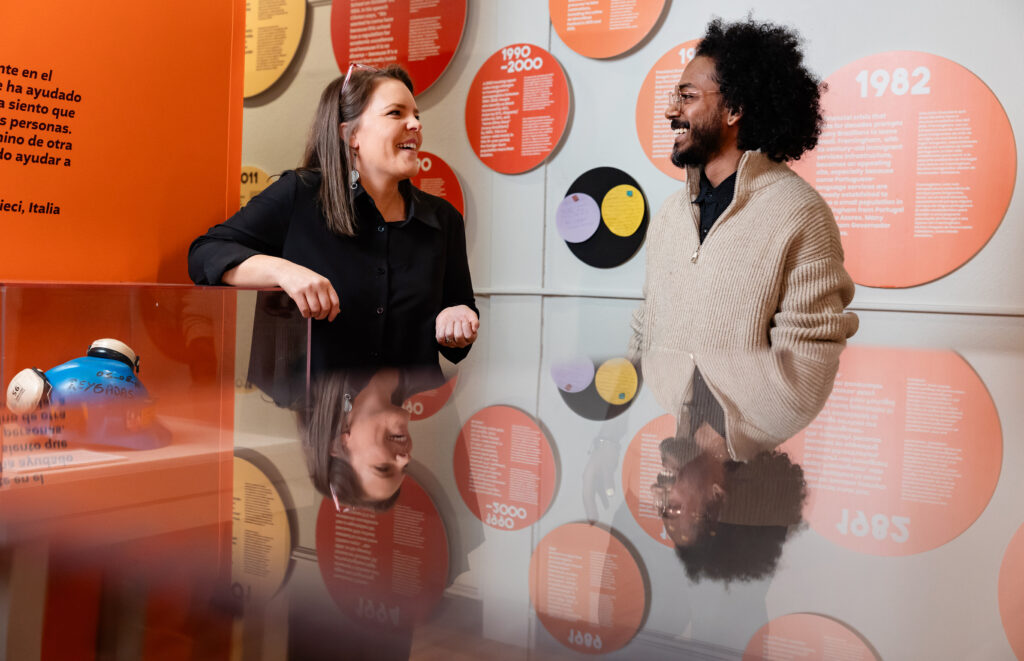
Can you share a little about the decision to incorporate three languages (Spanish, Portuguese, English) into every aspect of the exhibit?
Patrick: We didn’t just use Google Translate. We hired translators. And it’s not just about the language itself, but it’s also the dialect and getting it right. We can look up a word, but if it’s not in context…
Claudia Ruiz Gustafson: I read the Spanish. It is just perfect. It’s the way we speak.
Patrick: And that’s important to reach people.
Anna Tucker: My favorite part of projects is when people feel empowered to share their thoughts. With the translators, we asked them about different things and they had recommendations on the text itself. Not just the translation, but the content of the text. And that helped shape the exhibit. They became part of that curatorial writing team because of the thoughts that they shared. They would say, “okay, here’s the translation for what you provided. Can I recommend, or have you considered, this?” And the fact that we have the flexibility and the freedom to be able to say, “let’s change that.” It’s never too late to change an exhibition. Sometimes there’s a feeling in museums that when you put it on the wall, that’s it. A lesson that we learned is to always invite flexibility and space into the process.

